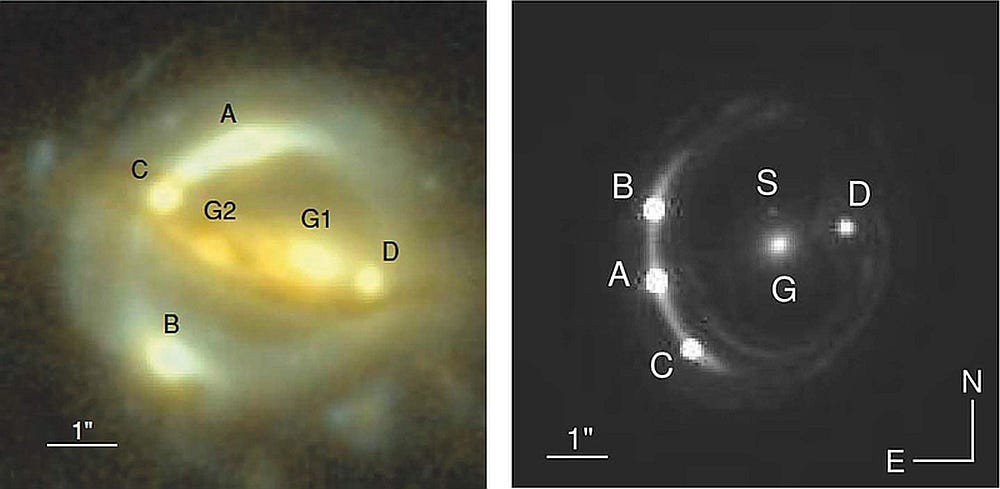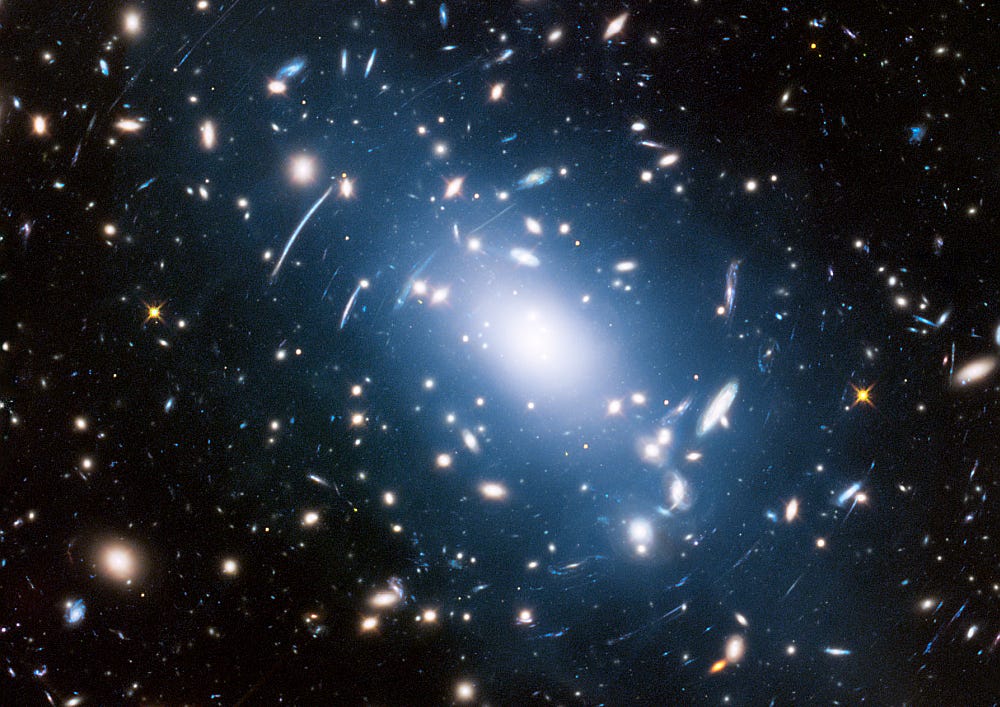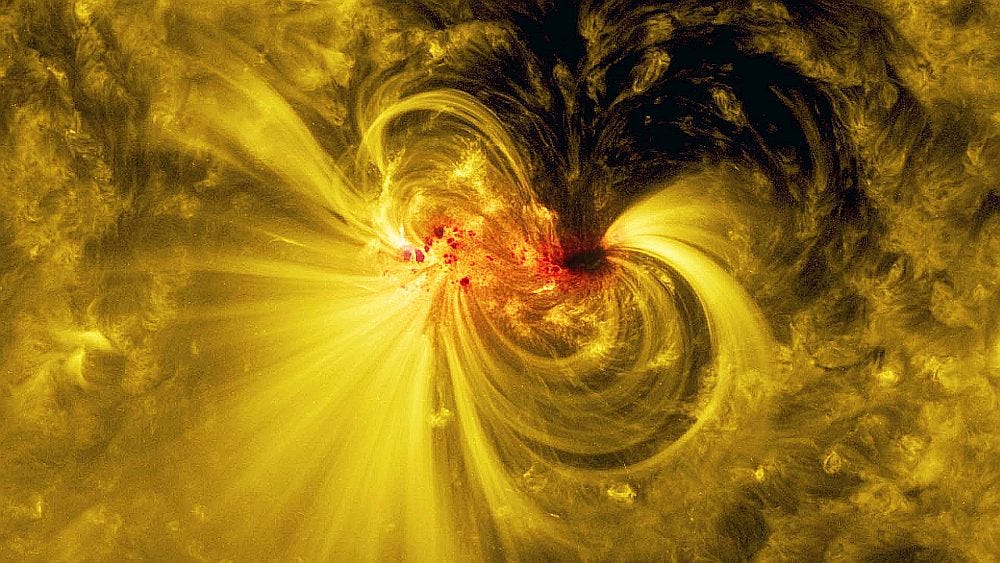The Cosmic Companion September 21, 2019
The age of the Universe, mapping dark matter using facial recognition, and the birth of sunspots.
Hello Everyone!
Massive objects in space can bend light —a fact which proved critical in confirming The General Theory of Relativity in 1919. Now, that same phenomenon suggests the Universe may be younger than we thought. Meanwhile, additional mysteries of the Cosmos may be answered by technology similar to facial recognition, and the ultimate cause of sunspots—a 400-year-old mystery—may finally be understood.
Let’s take off!
The Week in Space
Is the Universe Younger than We Thought?

The gravitational lenses observed in the new study. On the left is B1608+656 — a pair of galaxies, denoted G1 and 2. Four images of a quasar in the background can be seen near points at A-D. On the right, the galaxy RXJ1131 (labeled G) creates four images of another quasar in the background (A-D). The small dot, S, is a satellite galaxy of RXJ1131. Image courtesy of and copyright MPA.
The age of the Universe, staring with the big bang, is generally thought to be around 13.8 billion years old. However, a new study from the Max Planck Institute for Astrophysics (MPA) suggests the Universe may be significantly younger than believed — around 11 billion years old.
The Hubble constant — a measure of the rate at which the Cosmos is expanding — is the critical figure in determining the age of the Universe. The faster galaxies are flying apart from each other, the younger the Universe must be to have expanded its present size.
Read more: http://bit.ly/Is-Universe-Younger-than-We-Think
How Facial Recognition Could Unravel Mysteries of the Universe

One way for astronomers to see the effect of dark matter is by studying the bending of light passing by massive objects, like seen in this image of Abell S 1063, a galactic cluster containing thousands of galaxies. Dark matter can affect light from distant objects, bending it like a lens. By examining this effect, astronomers are able to create maps of dark matter within massive objects like clusters. Image credit: NASA, ESA and M. Montes (University of New South Wales)
Everything we see in the Universe around us — stars, planets, galaxies, and more — totals less than five percent of the total mass and energy that fills the Cosmos. The nature of dark matter and dark energy, which make up the vast majority of everything which exists, remains a mystery.
While dark matter holds galaxies and galaxy clusters together, dark energy fuels the ever-increasing rate at which the Universe expands. Although these effects are visible to astronomers, neither dark matter nor dark energy can be directly observed, making it difficult to study most of the Universe.
Read more: http://bit.ly/Artificial-Intelligence-Dark-Matter
Do we Finally Know the Causes of Sunspots?

A sunspot seen from space by NASA’s Solar Dynamics Observatory (SDO). Image credit: NASA’s Goddard Space Flight Center/SDO
Between the end of 1610 and early 1611, several astronomers, including Galileo, independently saw sunspots in their primitive telescopes. Since that time, the features have been closely examined by astronomers around the world.
Sunspots are relatively cool, dark regions on the Sun which form roughly 30 degrees from the stellar equator, and slowly drift closer to the equator over time. As the cycle progresses, sunspots become less common, fading out to a minimum. This cycle repeats every 11 years, although the magnetic orientation of the sunspots flips back and forth each cycle.
Read more: http://bit.ly/Causes-of-Sunspots

Coming soon: The First Woman on the Moon: The Past and Future History of Women in Space by James Maynard
Thanks for reading! If you want to keep up with the latest updates and news about astronomy and space exploration, visit www.thecosmiccompanion.com, join our Facebook page, and follow @TheCosmicCompanion on Instagram and @CompanionCosmic on Twitter.
Do you know someone else who would love this newsletter? Please share!
Astronomy - Don’t Leave Home Without It!
- James


